Members of Aboriginal and Torres Strait Islander communities are respectfully advised that this blog post contains the name and image of someone who has passed away.
I had a wonderful afternoon exploring The State Library of New South Wales and visiting the newly opened Michael Crouch Family Galleries. I was particularly interested to see the exhibition, UNESCO Six, a display of six significant collections that form part of Australia’s collective memory. I was lucky enough to be joined by a good friend which made the visit even more thought-provoking and enjoyable.
I don’t want to delve into this too much, but, I must begin by commenting on the problems of collective memory. Deeming certain things significant to a collective memory is absolutely riddled with exclusiveness and, potentially, alienation. What is deemed significant? Who makes these decisions and how much input is sought from the community? According to the exhibition, more collections from New South Wales will be added in years to come and these six collections only represent a segment of what is inscribed on the Memory of the World Register. Rather than solving the problem of who is in this collective memory and why, adding more to the mix might just exacerbate things.

I spent the entire year of my honours degree pulling apart this notion of collective memory. There is always going to be a group that has their memory represented and those who are marginalised. That is why I am mentioning it here, because I think we have to take a step back and question what’s on display.
In saying that, if you are looking for an exhibition that is beautifully designed, clearly labelled/sign-posted, and contains fascinating material, you have come to the right place. It is a really contemporary exhibition with a sleek design that complements the materials on display. Enlarged photographs and splashes of colour on the walls serve to distinguish and separate the six collections. Not only is this a nice design feature, but also, a great way to help visitors navigate the exhibition. It strikes a balance between too much and too little, in terms of design. In addition to this, the display cases are all seamlessly integrated into the exhibition space and aesthetically pleasing.
I’ve included a couple of photographs below that, hopefully, highlight the layout. Even the use of soft pastel colours help to make the space feel welcoming and calming.

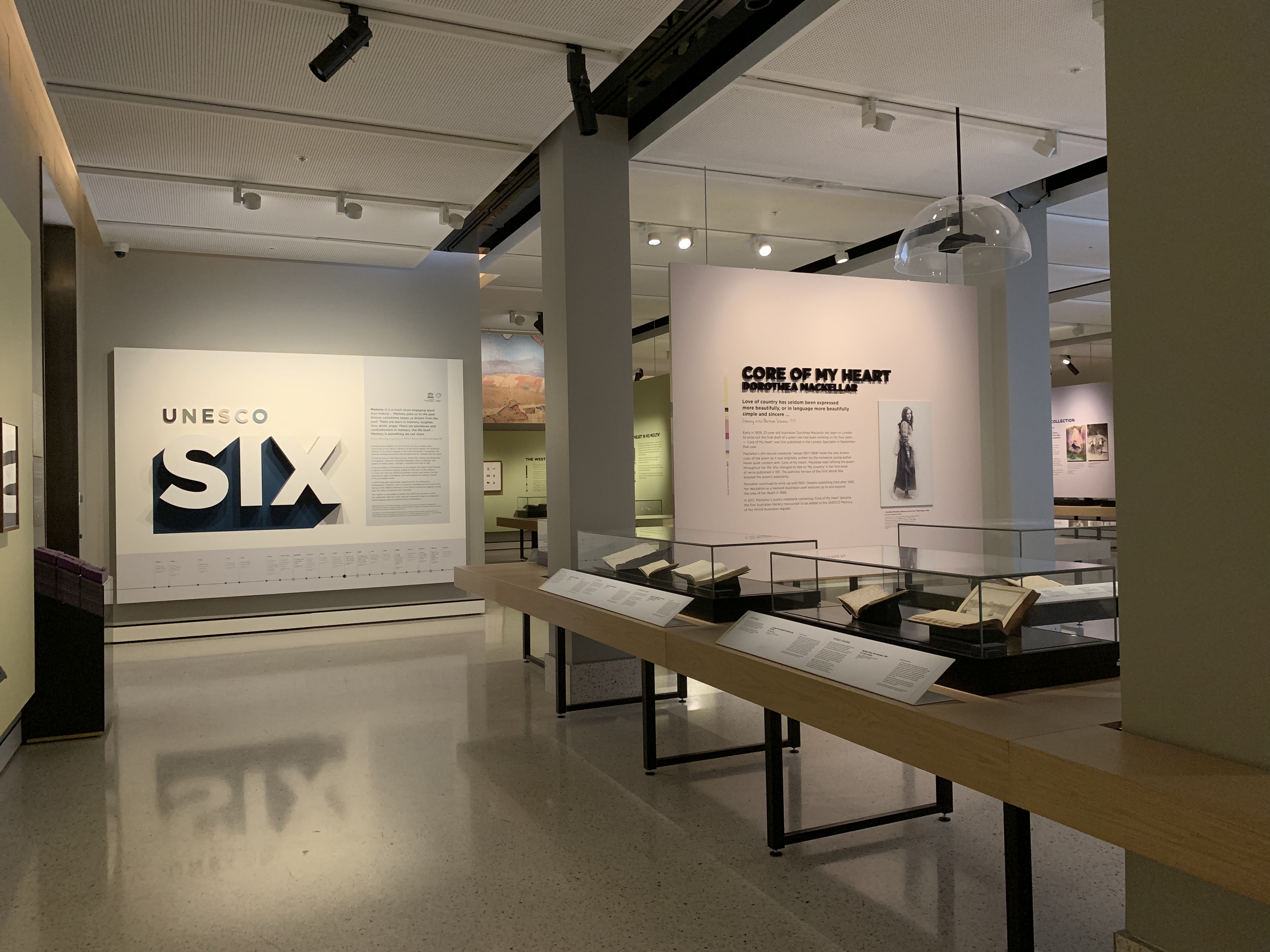
Before writing a little something on each of the six collections, I also want to mention the catalogues. I thought it was a really nice idea to have well-produced catalogues available for a small donation. A great way to generate some funding without forcing people to pay a ridiculous amount for the catalogue.

Ok, time for an overview of the six collections. The layout of each collection in the exhibition space is very similar – an introductory panel that is short and to the point, and a selection of objects each with their own individual label. The panels do a fantastic job of explaining everything you need to know about the collection on display. For the first time in a long time I didn’t leave feeling like I was suffering from visitor fatigue. You aren’t bombarded with too much information – just an overview panel and the opportunity to read any of the object labels that spark interest.
- First Fleet Journals
The State Library holds 10 of the 15 known journals from the First Fleet. For those reading who are not aware, the First Fleet comprised of 11 ships that sailed from England to Australia carrying convicts. The history after their arrival is, of course, one of great sadness and loss for the Indigenous population of Australia.
The journals on display were written by men of varying ranks and describe not only the eight month voyage to Australia, but also, life in the settlement.
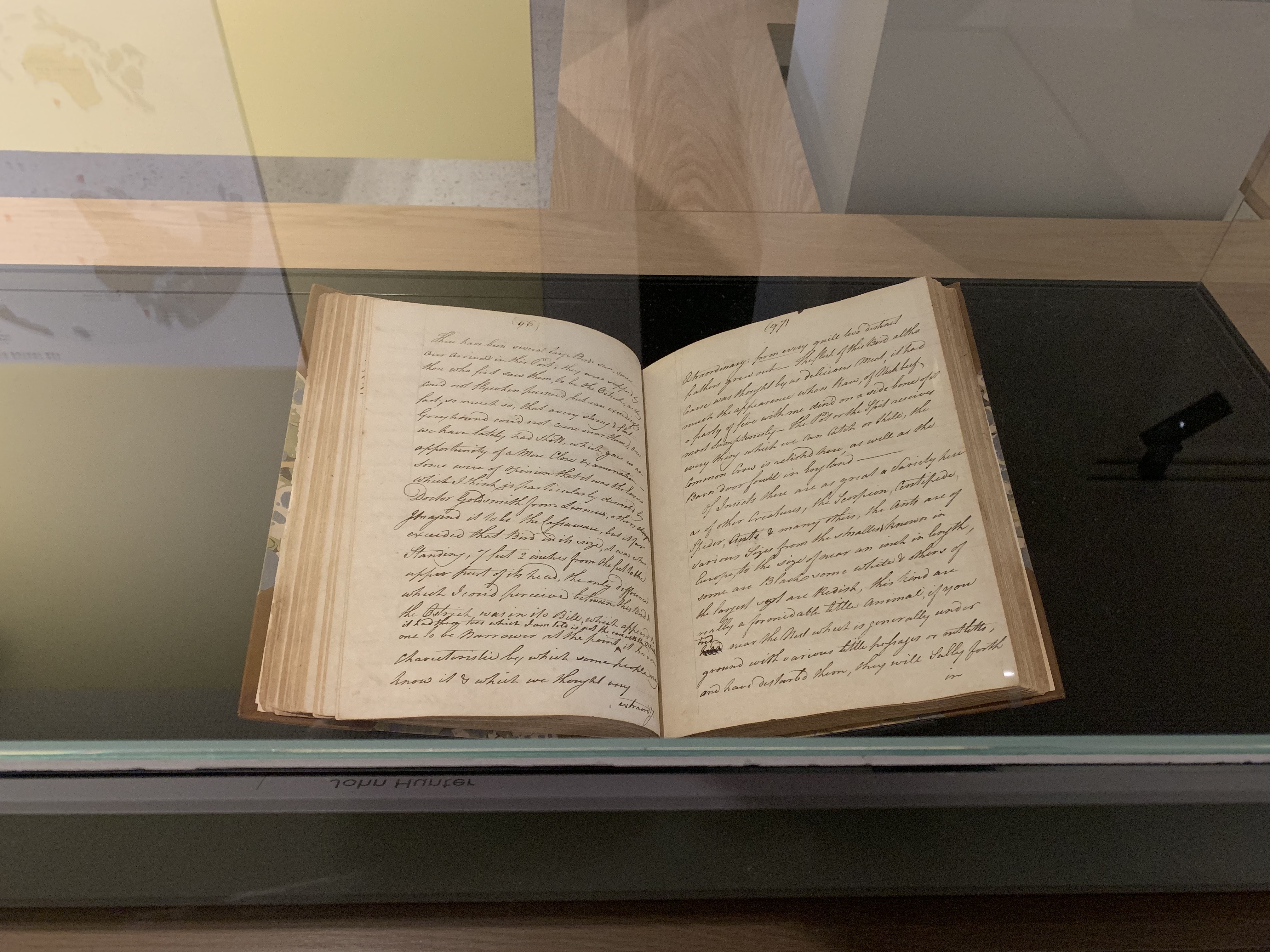
One of the journals belonged to George Worgan, an appointed surgeon on the HMS Sirius. The extract on display was written a week before arriving at, then termed, Sydney cove. It evokes a sense of enthusiasm for the future of the colony. His handwriting is also neat enough to be quite mesmerising.

2. Core of My Heart Dorothea Mackellar
In the collection of the State Library is a notebook that belonged to Dorothea Mackellar containing the final draft of the poem Core of My Heart. Now, I must confess that the title of this poem did not ring any bells. However, while we were standing in this particular section, you can hear the poem being read aloud. As soon as it got to the line “I love a sunburnt country” I immediately recognised it. I thought it was a wonderful idea to have the poem read aloud, as it added another layer to the display.
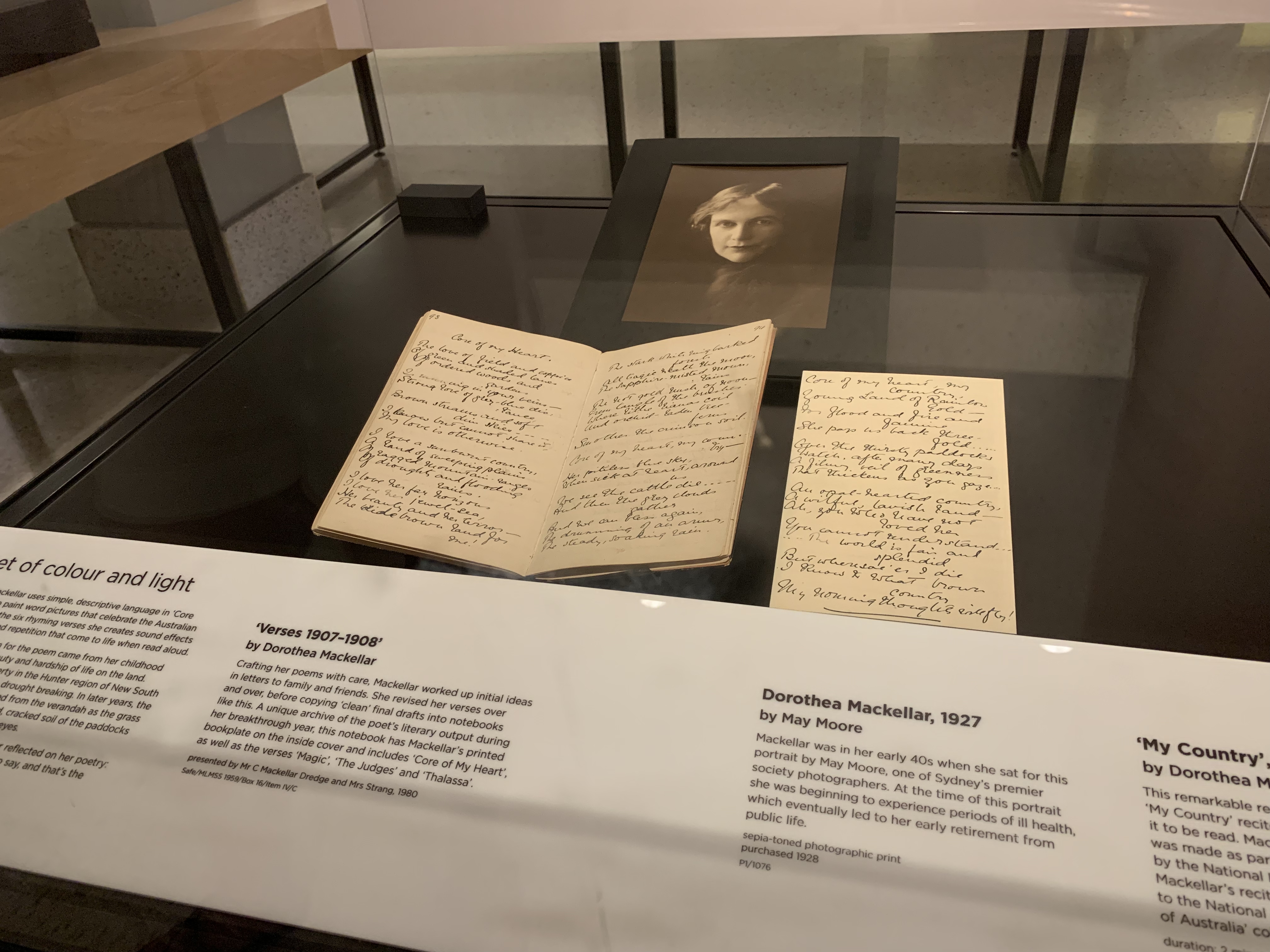
Mckellar wrote the poem while she was living in London and feeling quite homesick for Australia. Throughout her life, she would revisit and refine her words.
3 & 4. Holtermann Collection and Giant Glass-Plate Negative
It’s amazing what you can find hiding in someone’s house or shed. In 1951, over 3 000 glass-plate negatives were discovered in a garden shed in Chatswood, Sydney. These were captured by Henry Beaufoy Merlin and his assistant Charles Bayliss between 1870 and 1876. The images are of the New South Wales gold rush and were used to promote Australia to the world at various displays and fairs. One of the individuals they photographed was Bernhardt Otto Holtermann who discovered the largest piece of reef gold in the world.
Holtermann and Bayliss went on to create some giant glass-plate negatives depicting Sydney in 1875. They wanted to create the biggest photograph in the world. Holtermann transformed the tower in his mansion into one giant camera that overlooked Sydney Harbour, as well as the entire city. They developed some glass-plate negatives and toured these images hoping to encourage emigration to Australia.

When the panels were uncovered, the largest was found to be broken. Through painstaking work, it has eventually been pieced back together with help from a life-size contact print of the image made in the 1950s. Cue a lot of technical talk about Photoshop and overlaying digital images of the glass shards eventually leading to a greater understanding of where to place the physical shards.

5. Internee Papers
In my opinion, these were some of the most fascinating objects on display. During World War I, almost 7 000 German and Austro-Hungarian ‘enemy aliens’ were interned in Australian camps. The State Library has a remarkable collection of letters, diaries and concert programs depicting life inside the camps from the perspective of the prisoners.

There are a few diaries and letters belonging to Frank Bungardy, a German immigrant who was separated from his wife and children in Australia, interned, then deported to Germany. He was sent to Holsworthy Internment camp near Liverpool in Sydney.
At the end of the War, the decision was made to forcibly repatriate prisoners to their ‘homeland’, one they often did not identify with. In one particular diary entry, Bungardy has attached a newspaper clipping about the deportations and writes about his frustrations caused by being separated from his family.
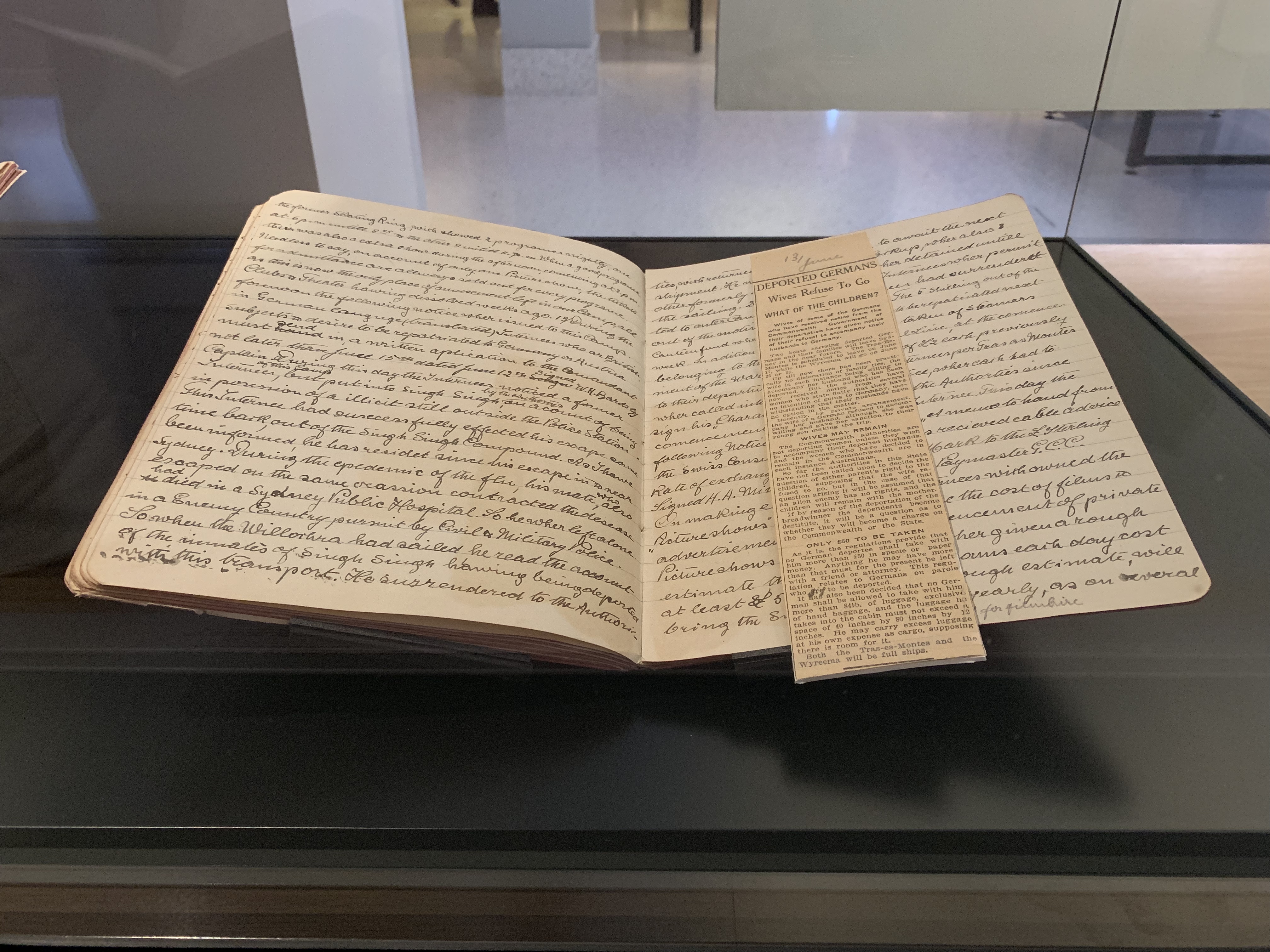
6. World War I Diaries
The State Library has a significant collection of diaries belonging to soldiers who fought in World War I. There are 236 in total along with maps, artworks, and photographs. It was incredible to learn that drives to collect these diaries started as early as 1918. Principal Librarian, William Ifould, was behind a significant push to collect. Ifould wanted diaries that reflected the day-to-day lives of soldiers.
It is quite harrowing to read some of their words.


One object that I want to highlight is a ‘Souvenir of the Great War’ scrap album by Lewis G Pimblett. As you can see in the image, Pimblett collected German coins, French railway tickets and a badge worn by the Portuguse (his spelling) Red Cross, amongst other things.

I really liked the sign that stated the transcriptions accompanying some of the objects were properly transcribed, i.e. using the original writer’s grammar, spelling and punctuation.
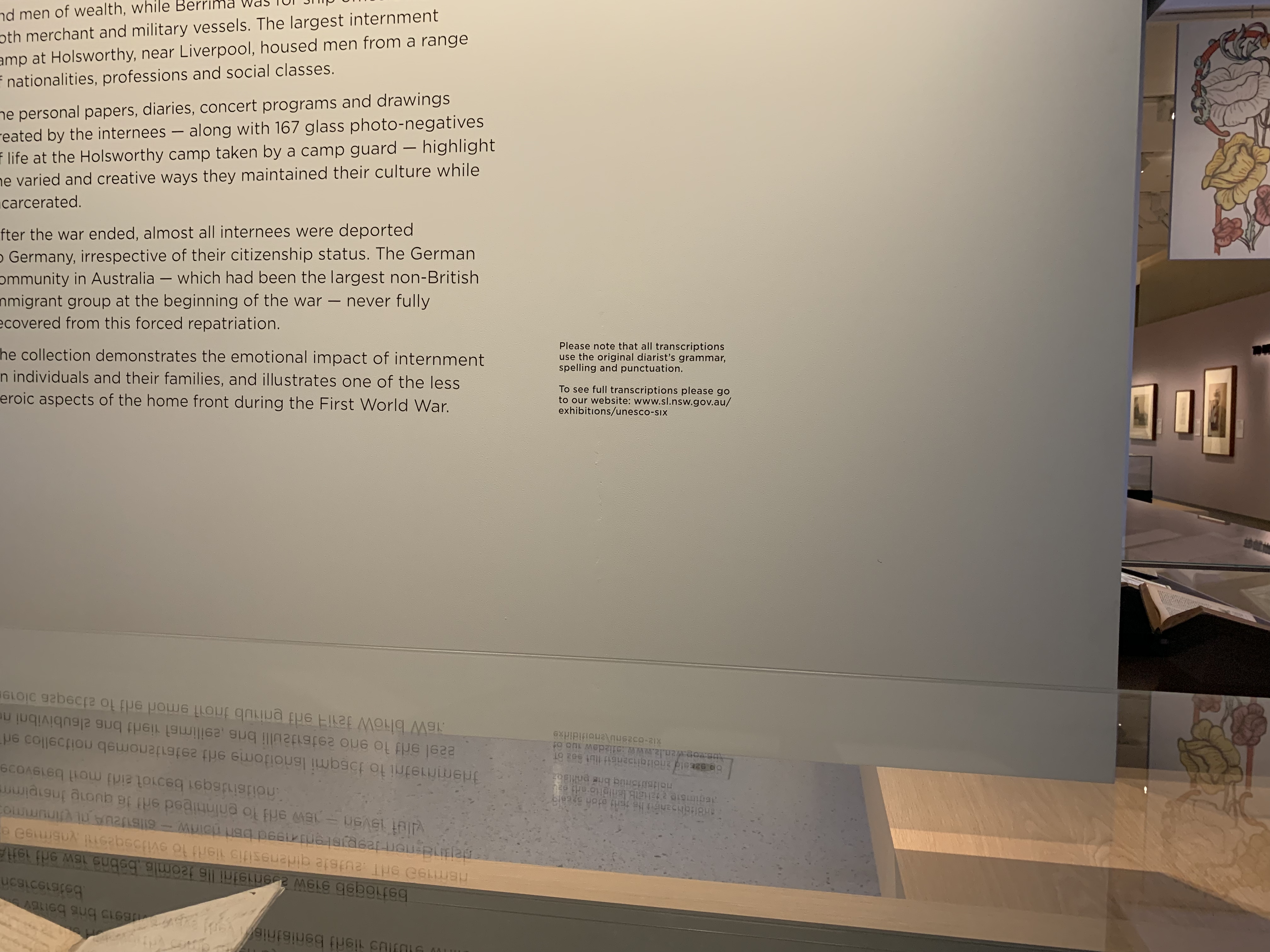
As well as these six collections there are three that have been selected for nomination in the future.
1. William Bligh’s Bounty logbook – documenting the mutiny in 1789.
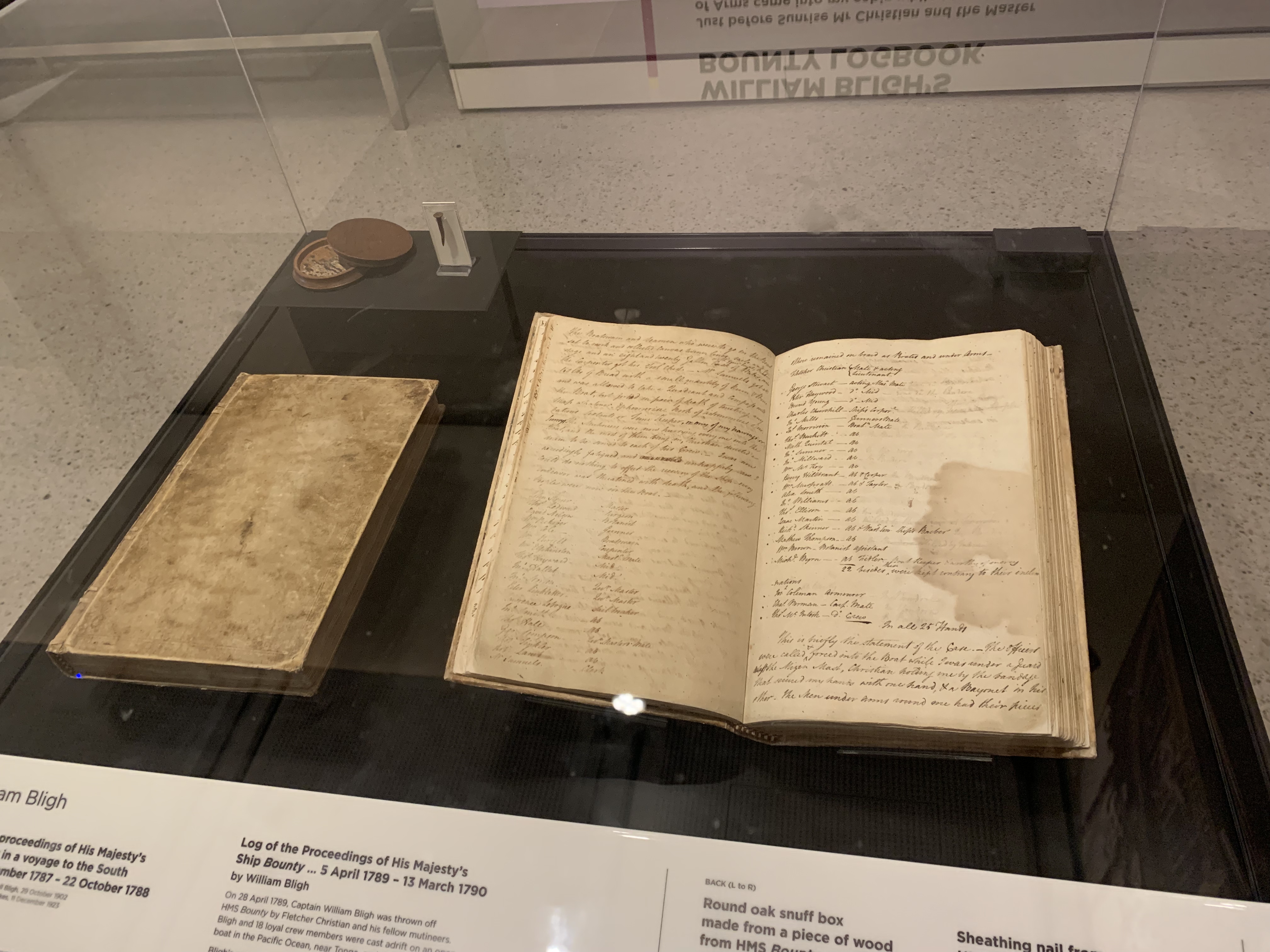
2. Myles Dunphy collection – Dunphy was the founding member of Sydney Bush Walkers Club and lobbied to make areas such as the Blue Mountains national parks.
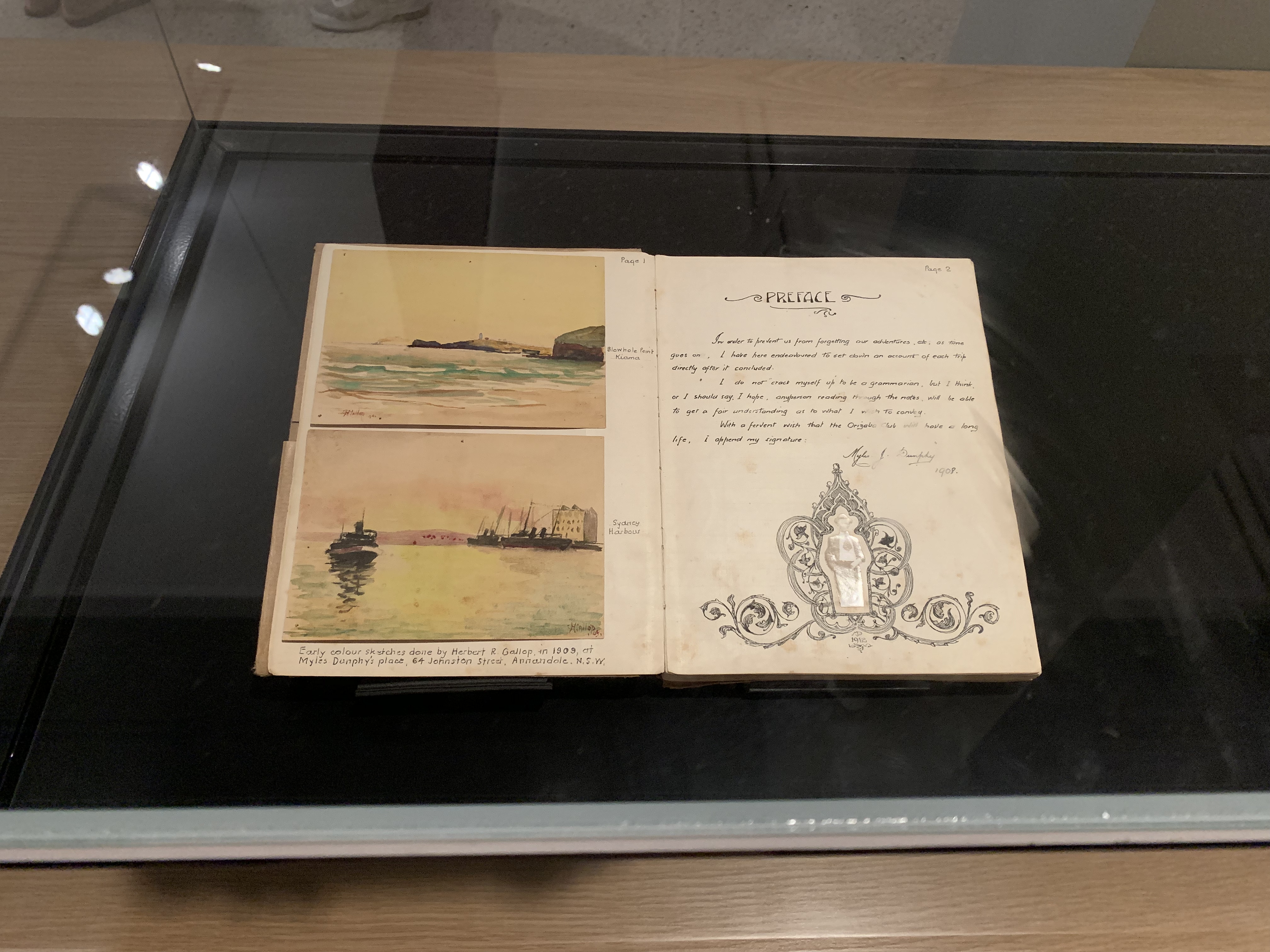
3. David Unaipon papers – Unaipon is celebrated as Australia’s first published Indigenous author collating works on Aboriginal culture.
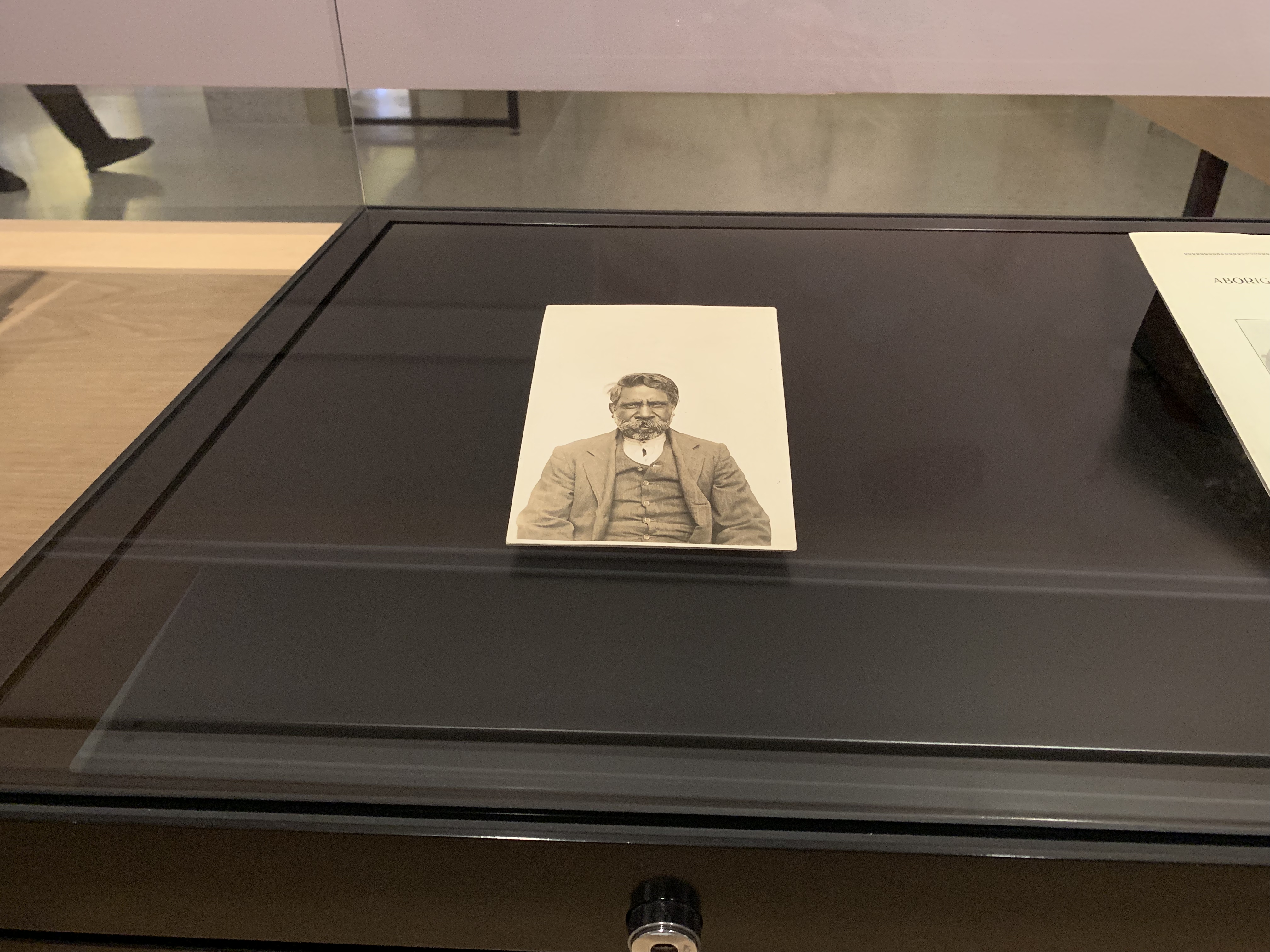
I was quite surprised that these three collections aren’t actually inscribed, but, are being nominated. In fact, I only found out about this while reading the catalogue in preparation for writing this blog post. This wasn’t really made clear in the exhibition and I think the layout could have made it a little more obvious.
UNESCO Six is on display at The State Library of New South Wales until 5 May 2019. The exhibition is open every day and you can find opening hours each day published on their website. The entire exhibition is accessible. Entry is free and a catalogue can be purchased with a small donation.
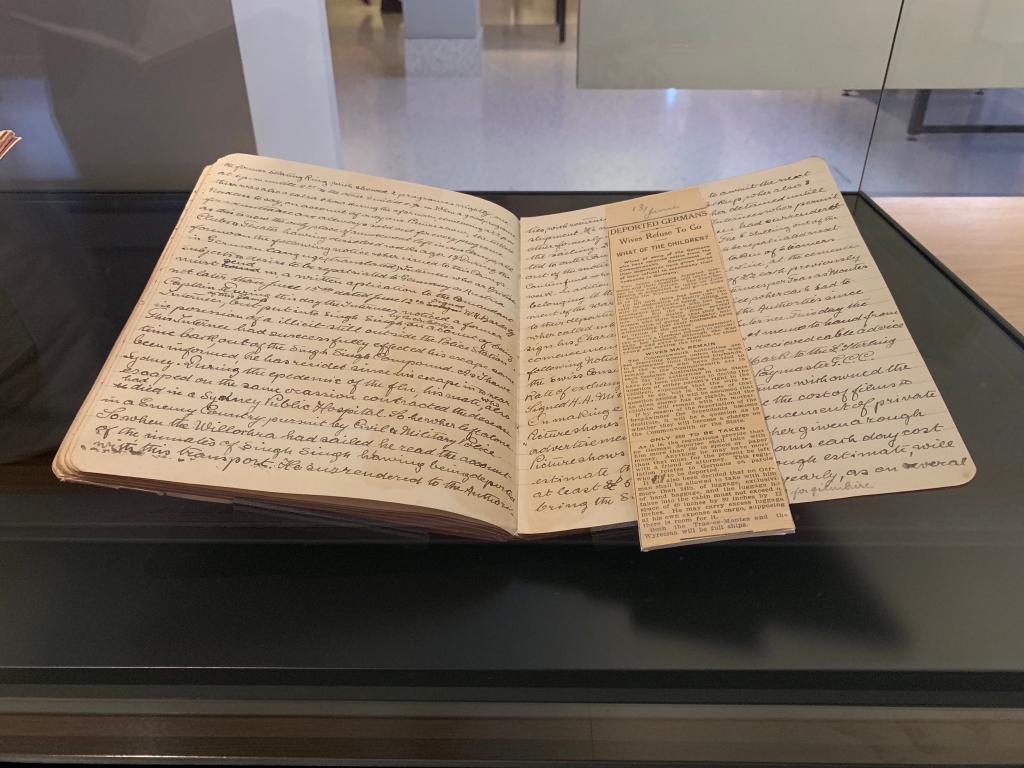

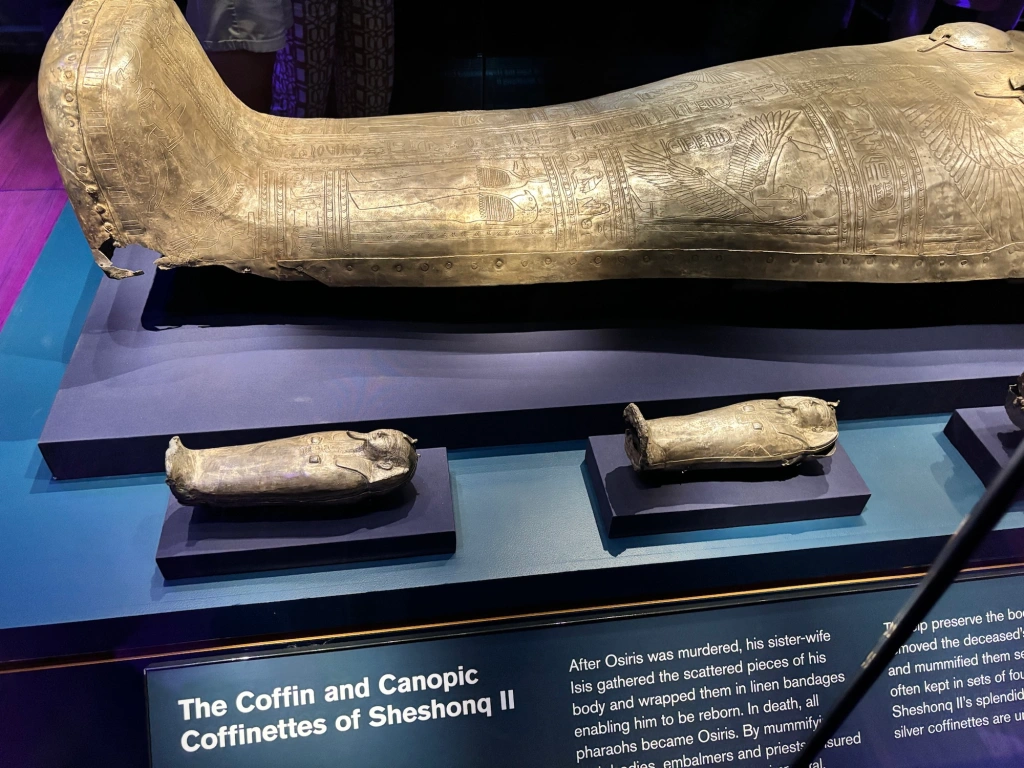
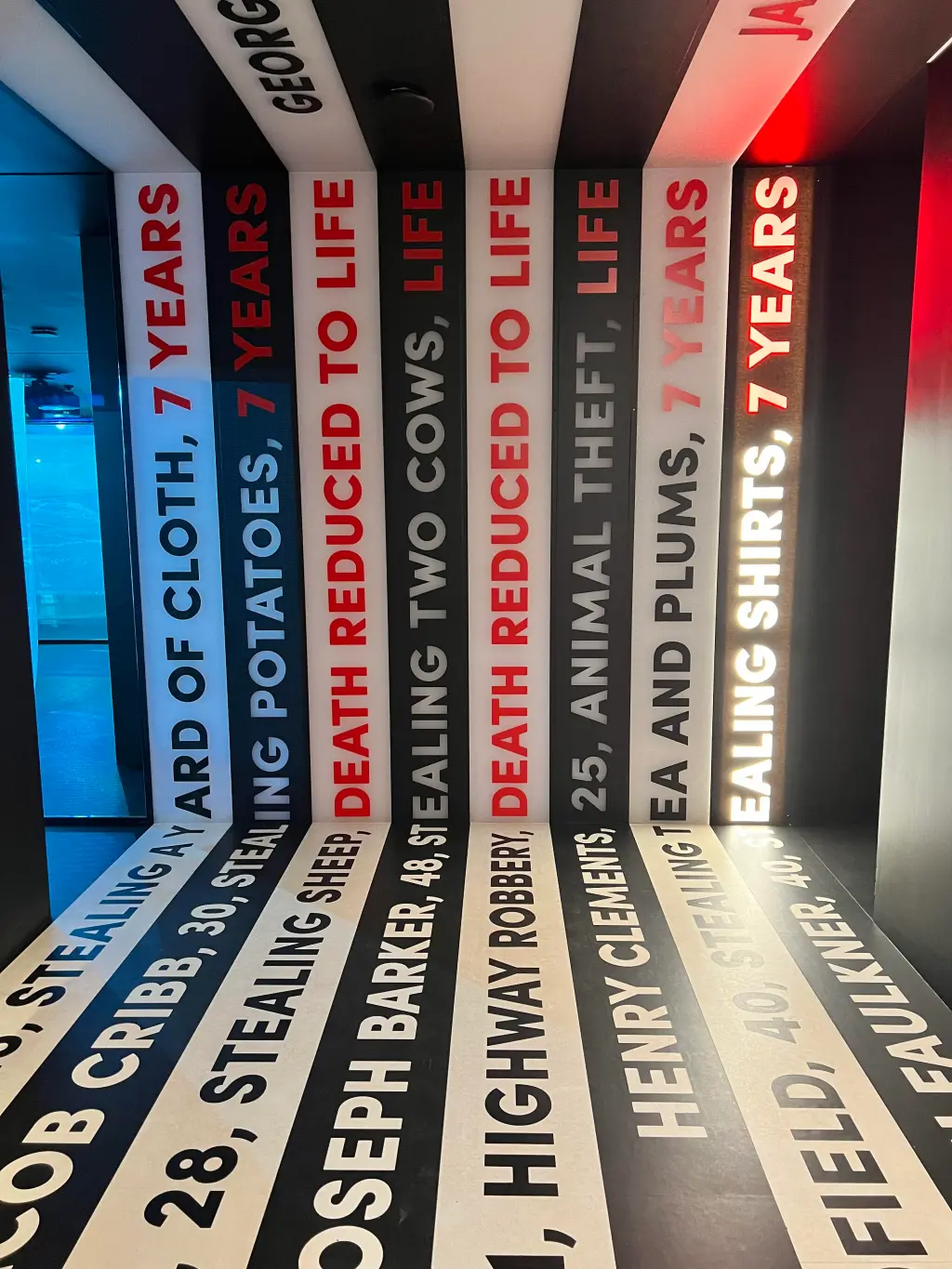


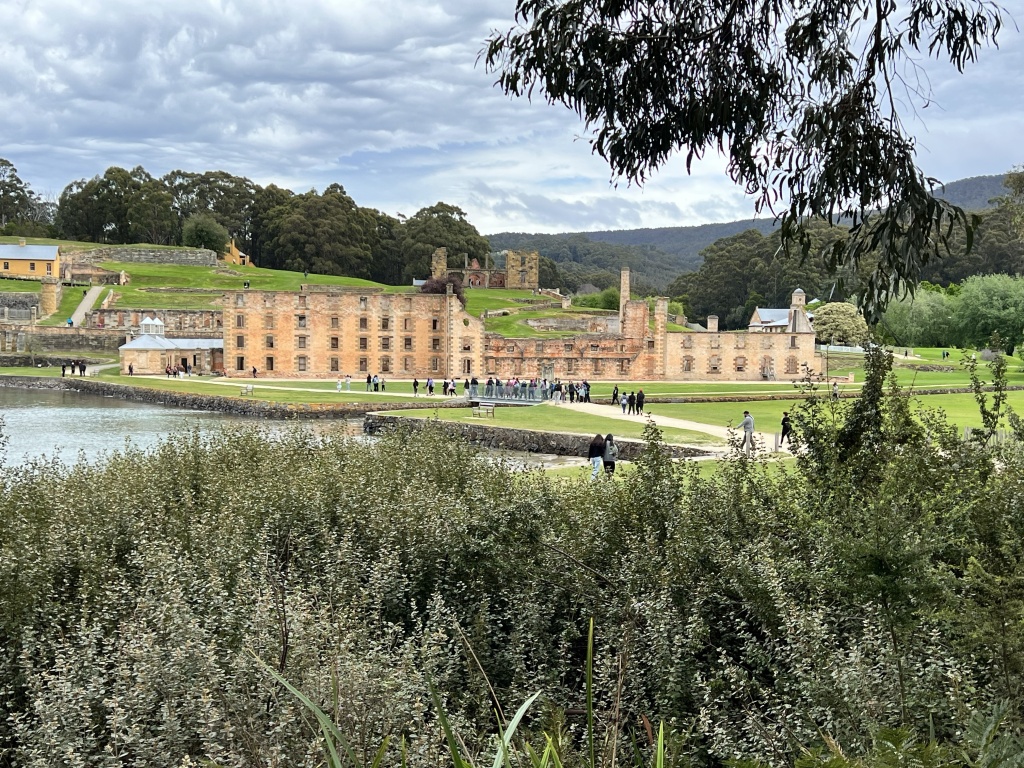

Leave a comment